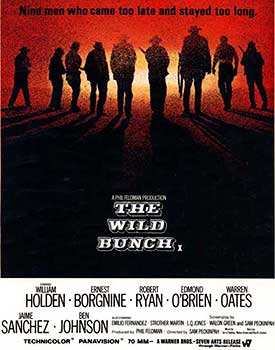The Western
Readings:
Mandatory movie for this learning unit:
- The Searchers (John Ford, 1956)
Edwin S. Porter’s “The Great Train Robbery” (1903)
The first streaming film in this online lecture is “The great Train Robbery”. The silent movie was directed by Edwin S. Porter in 1903.
The filmmaker established in this short story (12 minutes and 14 individual shots) the main visual characteristics of the genre. He also shaped the ICON of the cowboy.
Porter is the father of the Western, we can say.
The Western was for decades the most popular and the most American of all the film genres.
The Western in the American Culture
- The western represents the epic genre of the American culture.
- The Epic is the first cultural manifestation of any civilization, its first form of art.
- It is especially important because it contributes to create a national identity.
- And in the dawn of every culture, we found epic poems.
- Examples:
- Ancient Greek-Roman World:
- The Iliad, The Odyssey, The Aeneid
- German Culture:
- Sagas (Das Nibelungenlied)
- French Culture
- “La Chanson de Roland”
- Spanish Culture:
- “El Poema de Mio Cid”
- Ancient Greek-Roman World:
The Epic Hero
- The hero is always an individual with a mission.
- This mission is to protect the values, the moral values that make civilization possible.
- The hero is never ambiguous, like, for instance, the anti-heroes of the Film Noir.
- The epic hero is a tragic figure because, although he is leveling the path for civilization, this path is to narrow for him.
- He actually belongs to the world he is fighting against.
Recurrent Motives
- Icon of the cowboy (the hat, the rifle, the revolver, the jeans and boots – and, of course, also the horse)
- Big, open landscapes (in opposition to the film Noir or the horror film, genres that were characterized by an oppressive and claustrophobic mise-en scene, the Western exploits the visual power of the “Big Country”)
- Post Civil War spirit (the hostility between north and south is still intense – the wounds had not been healed yet)
- Fight against the Wildness (mostly represented by the outlaws – and above all, by the Native-Americans, the “Indians” in the films)
- Conflict between the sedentary folks and the cattlemen (this conflict has an anthropological basis. There is this clash in all primitive societies. The sedentary people try to set limits to the land and to define the own property and cattlemen try to fight against these limits, so that their animals can eat freely everywhere. This historical fight is the origin of the gun-man, hired to defend the interest of the different parties)
- Symbols of civilization: town, railroad, and newspaper
- Law, and the gallows as its symbol
- Code of masculinity ( the values of the epic hero belong to what we could considered male values, like courage, loyalty, honesty, integrity, and as opposed to the female values, such as affection or compassion )
- Puritanism ( The epic hero has an almost mystic and monastic life )
- The Duel as climax of the conflict (the mythic fast gun – or drifter)

John Ford (1895-1973)
- John Ford is the best example of how a director was able to develop a totally personal art style working for the big studios in Hollywood. He was also a very prolific director. We keep records of 125 movies. He started in the silent period and was still making masterworks in the 1960ies.
- He started his career as Stunt man in the first decade of the 20th century.
- We don’t know when he directed his first film. It should have been between 1910 and 1920. In this decade he made 30 movies, most of which are lost.
- Of the silent period, two movies should be mentioned:
- The Iron Horse (1924) and
- Four Sons (1928)
- His style remains throughout his whole career extremely sober. He did never gratuitously move the camera. Therefore he is regarded as the most classic of Hollywood classics.
- John Ford’s Westerns:
- The Iron Horse (1924)
- Stagecoach (1939)
- My Darling Clementine (1946)
- Wagon Master (1950)
- The Searchers (1956)
- The Horse Soldiers (1959)
- Sergeant Rutledge (1960)
- Two Ride Together (1961)
- The Man Who Shots Liberty Valance (1962)
- How The West Was Won (1962 – Segment “The Civil War”)
- Cheyenne Autumn (1964)
Selected Movies
Stagecoach (United Artist, 1939)
- Directed by John Ford
- Music: Gerald Carbonara
- Screenplay: Dudley Nichols, based on a story of Ernest Haycox.
- Cinematography: Bert Glennon.
- Starring: John Wayne, Claire Trevor, Thomas Mitchell, John Carradine
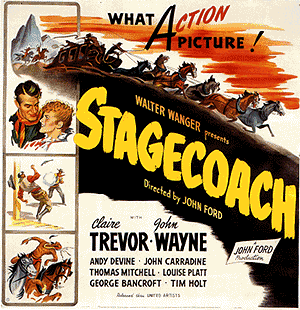
The Searchers (Warner Brothers, 1956)
- Directed by John Ford
- Producer: Merian C. Cooper
- Screenplay: Frank S. Nugent based on a novel by Alan Le May
- Music: Max Steiner
- Cinematography: Winton C. Hoch
- Starring: John Wayne, Jeffrey Hunter, Ward Bond, Vera Miles, Natalie Wood
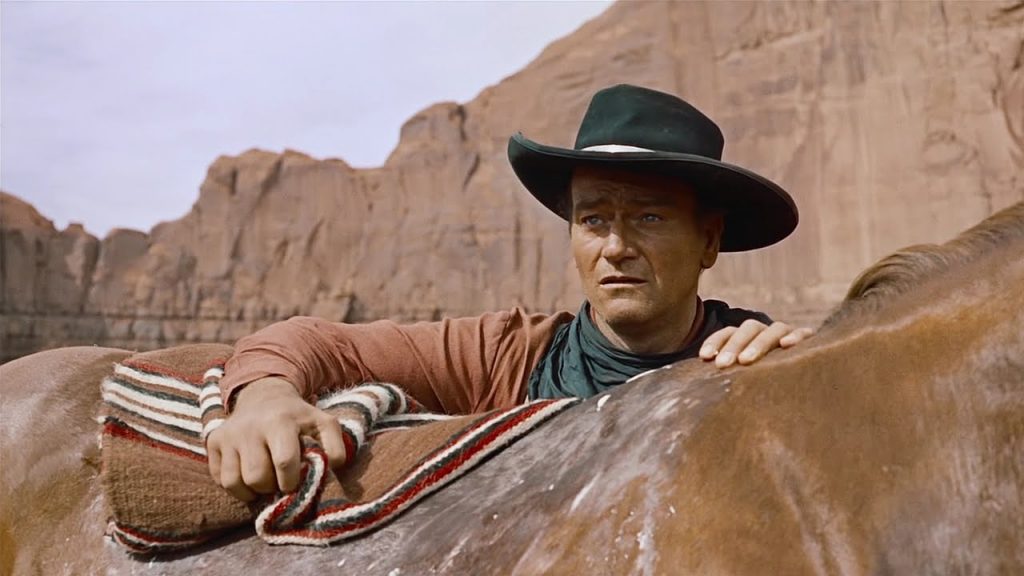
The Man Who Shot Liberty Valance (Paramount, 1962)
- Directed by John Ford.
- Producer: Willis Goldbeck, John Ford
- Screenplay: James W. Bellah and Willis Goldbeck, based on a story by Dorothy M. Johnson
- Music: Cyril Mockridge
- Cinematography: William H. Clothier
- Starring: John Wayne, James Stewart, Vera Miles, Lee Marvin, Edmond O’Brien
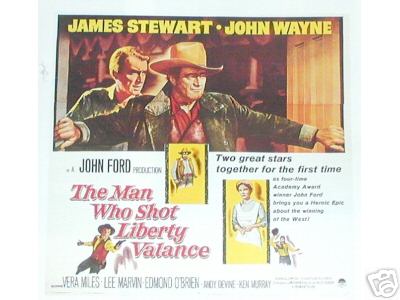
The God, the Bad and the Ugly (Alberto Grimaldi, 1966 )
- Directed by Sergio Leone.
- Producer: Alberto Grimaldi
- Screenplay: Sergio Leone and Luciano Vincenzoni
- Music: Ennio Morricone
- Cinematography: Tonino Delli Colli
- Starring: Clint Eastwood, Lee Van Cleef, Eli Wallach
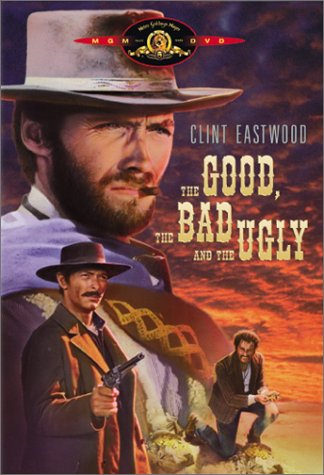
The Wild Bunch (Warner Brothers, 1969)
- Directed by Sam Peckinpah.
- Producer: Phil Feldman
- Screenplay: Sam Peckinpah and Walon Green based on a story by Walon Green.
- Music: Jerry Fielding
- Cinematography: Lucien Ballard
- Starring: William Holden, Ernest Borgnine, Robert Ryan, Ben Johnson, Warren Oates
